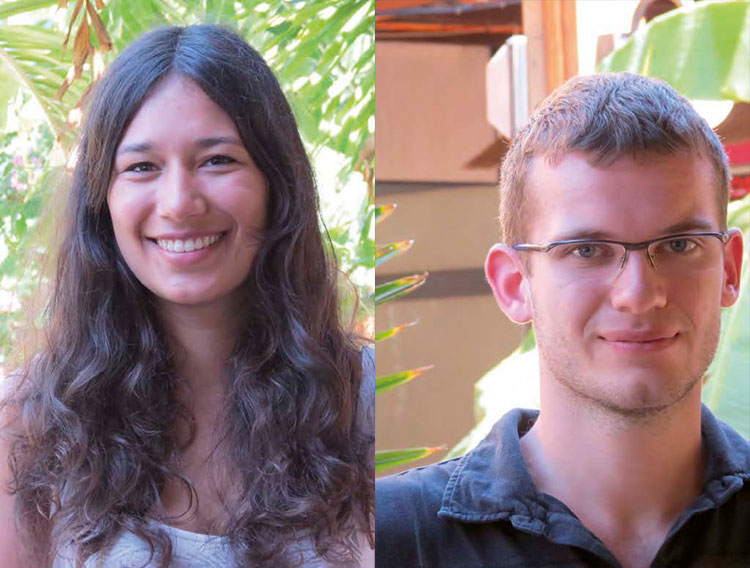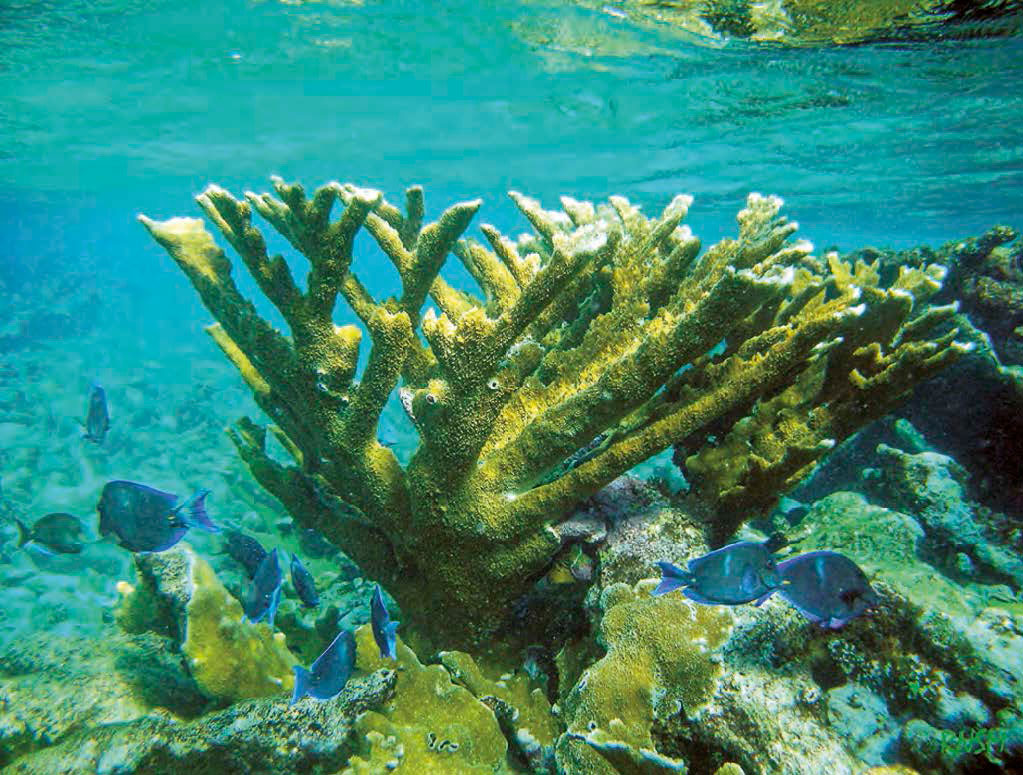Do you know that you can propagate coral like you can propagate a plant? That’s how to create a coral nursery, with the goal of implanting young colonies on the coral reefs that are in bad health. Alizée Masson and Nicolas Oury, two interns at the Réserve Naturelle, were charged with creating the first coral nursery for Saint Martin. The coral in question are Acropora sp, or to be exact, Staghorn coral (Acropora cervicornis) and Elkorn coral (Acropora palmata), both in pretty bad shape but which grow more rapidly than other types of coral - up to almost 4 inches per year. The sites for implanting the coral has been determined, at depths between 15 and 30 feet, in remote spots that are not very visited. This project required numerous dives in order to take cuttings from healthy coral, and to attach them to a solid support, such as rope or wire mesh, until they develop. Alizée, a 21 year-old student in a master’s program for «Ecology, Biodiversity, Evolution» at Paris Sud University, was with the Réserve from March 30 to June 4, 2015, while the internship for Nicolas, a 19 year-old student at the Ecole Intechmer in Cherbourg and a future marine technician, runs from April through August 2015.
The first Acropora sp. coral nursery
Acropora cervicornis
These two interns worked under the aegis of Julien Chalifour, who originated the project. «The goal was to create new colonies in zones where the Acropora sp. were no longer present, especially as they are the key genus and the first type of coral to construct reefs in the Caribbean. It must be pointed out that without the barrier reef, the waves would little by little eat away the island’s coastlines,” he explains. Where are these new colonies implanted? At Grandes Cayes, for example, where the Acropora sp. has been damaged due to strong swells, the surface temperature of the ocean, hurricanes, trampling and poaching, but also by enrichment in organic material of human nature that boosts the growth of algae, that suffocates and weakens the coral, favoring the development of diseases that kill. Futures cuttings will be taken from various coral in order to favor the resistance of the ensemble in the face of all the different disturbances that might be encountered.

Alizée Masson & Nicolas Oury

















